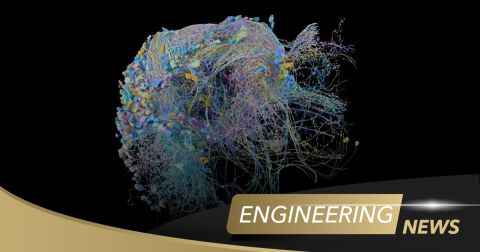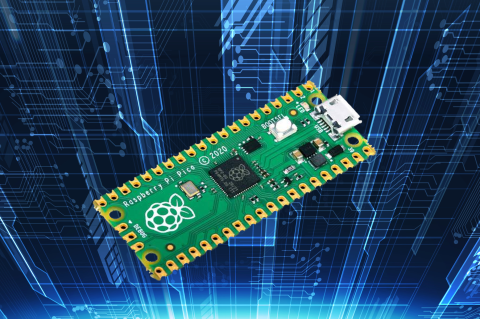Graphene Electronics Might Power Your Next Circuit Board

Graphene has long been touted as a wonder material for use in electronics and electro-optics. Still, commercialization and realistic applications have been something of a pipe dream over the last two decades. The physics of this material and its structure give it unique properties that have been predicted and observed repeatedly at the nano-scale, but scaling graphene production and device fabrication have been challenging until only recently. Today, you can purchase graphene nanoparticles online for a hefty $300 per gram, but it has not been widely incorporated into specialty electronics.
Just this month, a team of physicists at the University of Arkansas led by Paul Thibado claim to have fabricated a graphene circuit that generates power due entirely to thermal fluctuations. This refutes an important claim by one of the most popular physicists of the 20th century, Richard Feynman, who asserted that the random motion of atoms due to thermal fluctuations cannot do work.
The magic of the Thibado group’s claim is in the circuit designed for energy harvesting from graphene. This circuit is simple enough to be integrated as a power source into integrated circuits should graphene production see even greater commercialization. Let’s look at this breakthrough in graphene electronics in more detail and what this might mean for PCB designers.
Getting “Free” Energy from Graphene Electronics
The graphene electronics circuit created by the Thibado group was examined in a scanning tunneling microscope and operates via quantum tunneling. A small graphene film in their circuit acts like an AC current source as it vibrates under its thermal energy. The additional DC source releases and captures charge repeatedly during operation, where the discharge is then delivered to the load. A schematic of their circuit and some experimental results showing the average measured current on diode D2 are shown below.

Here, the idea behind this circuit is quite simple in that it claims to take advantage of random motion and trap charge carriers on one side of the diode stage through rectification. The process giving rise to this spontaneous current transport is Brownian motion (named after the botanist Robert Brown), which happens to be a ubiquitous model for describing random processes in nature.
If the above circuit seems too good to be true, then you’re not the only person that would think so. The controversy stems from two angles that are fundamental in thermodynamics and statistical physics:
- From the above circuit, it seems the Second Law of Thermodynamics has been violated! In other words, we’ve found a way to sort high energy electrons from cold electrons. To learn more about why this would be a problem, read more about Maxwell’s Demon thought experiment in your favorite physics textbook.
- In the 1950s, physicist Léon Brillouin published a landmark paper proving that using a single diode to direct charge to a load would produce net-zero work on a load.
It seems from Thibado group’s work that adding the second diode is a simple solution to address the second point from Brillouin. In the single diode case, charge transport via tunneling and driven by thermal fluctuations would eventually deplete the battery in the above circuit.
The next step in the team’s work is to attempt to hold charge across a capacitor. This requires further miniaturization down to the wafer level, as well as possible integration into practical devices. However, the story of graphene electronics doesn’t end at energy harvesting; we can expect a range of other graphene-based products to come to market in the near future.
Getting Graphene to Market
Energy harvesting isn’t the only potential application of graphene electronics. Just last year, Samsung announced it “hopes” to release a smartphone powered by a new graphene battery technology in 2020, or possibly 2021. They claim their graphene battery will be able to charge in under 30 minutes. This technology, as well as others being touted for use in batteries, quantum gates, ultrafast transistors, and RF applications, will never be widely available until there is much greater manufacturing capacity.
If you’re like me, you’ve already put in your inquiry with NTS Innovations, which currently has an exclusive worldwide license to Thibado group’s new graphene energy harvesting technology. I’m very interested to see what type of evaluation module they’re willing to supply. If anything interesting comes of the inquiry, I’ll be sure to write an article on it.

Once graphene electronics hit the market, you can look to Altium to help you stay on top of new trends and give you the design advice you need to start working with new components. Altium Designer® includes all the tools you need to work with advanced technologies like photonics, graphene, unique interconnects, and much more.
Once you’ve created your new board, you can share your design data on the Altium 365™ platform, giving you an easy way to work with a remote team and manage your design data. We have only scratched the surface of what is possible to do with Altium Designer on Altium 365. You can check the product page for a more in-depth feature description or one of the On-Demand Webinars.










